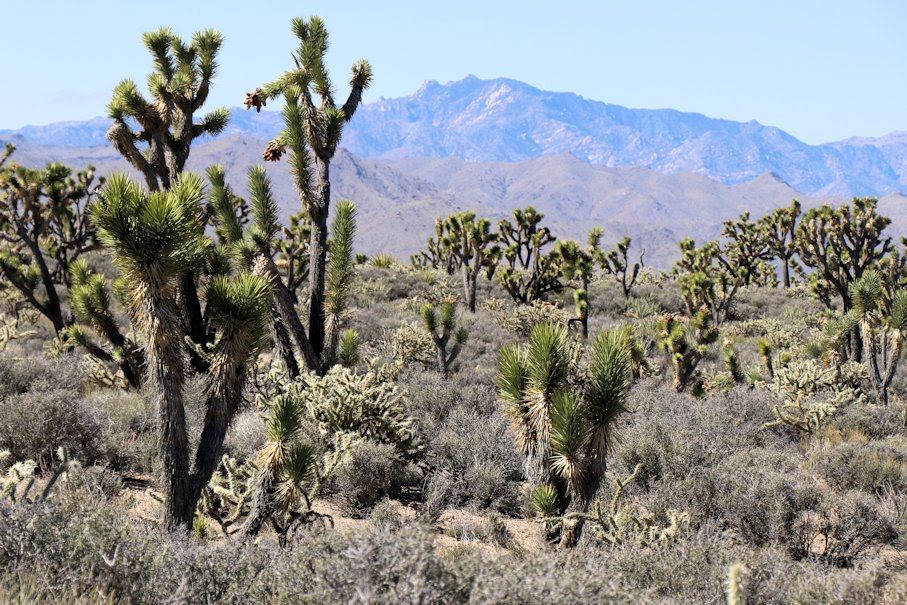It’s time for President Biden to designate the Avi Kwa Ame National Monument

As we pack up our cars and campers to embark on summer vacations this year, it’s likely that many of us will head to destinations that were protected as a result of legislation that Congress passed 116 years ago.
The Antiquities Act, which was signed into law by President Theodore Roosevelt and used by nearly every president since, gave presidents the authority to safeguard some of our most stunning and culturally significant landscapes. In fact, five of the nation’s most-visited national parks, including the Grand Canyon, Grand Teton, and Acadia, were first protected as national monuments by presidents using the Antiquities Act.
Safeguarding our public lands and waters and conserving our cultural heritage for future generations is one of the most important acts any president can take — and the Antiquities Act has been an important tool to do just that. It has helped preserve important cultural and historical sites, such as the petroglyphs, dwellings, and masonry walls of Bandelier National Monument in New Mexico, where Indigenous people first settled more than 11,000 years ago. It protected smaller sites too, like the laboratory in New Jersey where Thomas Edison created many of his most famous inventions. It also has been used to honor places where Americans have served our nation – such as the Harriet Tubman Underground Railroad Monument and the World War II Valor in the Pacific Monument.
Many of the areas also conserve threatened wildlife. Canada lynx in the Katahdin Woods and Waters Monument in Maine, Rio Grande cutthroat trout in the Rio Grande del Norte Monument in New Mexico, Mojave desert tortoise in the Gold Butte Monument in Nevada, and Hawaiian monk seal in the Pacific Remote Islands Marine Monument in the Pacific Ocean represent just a small number of the species that have benefited from the Antiquities Act.
While at times the Antiquities Act has come under criticism, most of the areas that have been protected by the act have become beloved landmarks visited by millions of families, school children and outdoor recreationists every year. And even though President Trump used the Antiquities Act to reduce two monuments in Utah (which were later restored), he did use the act to create Camp Nelson National Monument in Kentucky—an important Civil War base and recruitment and training center for African American soldiers.
In doing so, he joined the long line of presidents who realized that conserving our sweeping landscapes, cultural, and historical sites is important for future generations. President Theodore Roosevelt designated 18 sites, including Devil’s Tower in Wyoming and Muir Woods in California. President Harding conserved eight areas, including Bryce Canyon in Utah. More recently, President Eisenhower used the law to protect the Chesapeake and Ohio Canal, an important transportation route stretching over 184 miles from Washington, D.C. to Cumberland, Maryland, and which attracts 5 million visitors every year.
President George W. Bush used the Antiquities Act six times, first to create the African Burial Ground National Monument in New York, which commemorates the largest known burial ground for free and enslaved African Americans. He also named four monuments in and around islands in the Pacific Ocean, to protect coral reefs and marine biodiversity. President Obama authorized monuments to honor Latino laborers in California, Buffalo soldiers in Ohio, gay rights activists in New York and the Freedom Riders in Alabama. He also conserved several natural areas including the Browns Canyon section of the Arkansas River in Colorado, which is one of the most popular whitewater rafting destinations in the country.
Now it’s time for President Biden to use this important conservation tool to safeguard culturally significant lands and important wildlife. There is perhaps no better place to start than in Nevada by creating the Avi Kwa Ame National Monument. This region spans nearly 450,000 acres of public land and would connect the Mojave National Preserve with the Lake Mead Recreation Area, which would protect sacred Indigenous and cultural artifacts. The land also supports the migration pathways of bighorn sheep and other important desert wildlife. Finally, creating a National Monument here presents opportunities for expanding outdoor recreation and access to nature that so many people desire. It’s why the local and Tribal communities surrounding Avi Kwa Ame have been so vocal in asking for this common-sense national monument designation.
More than 100 years ago, Congress had the foresight to pass the Antiquities Act to ensure that irreplaceable landscapes would endure, our wildlife heritage would thrive and that cultural sites of incalculable value would never be lost to history. The law has been an important way for presidents to cement their legacy as protectors of America’s vast cultural, natural, and historic treasures. President Biden, please act to protect the outstanding ecological, Indigenous, cultural, and recreational values embodied in Avi Kwa Ame.
David Willms is the senior director of Western wildlife and conservation at the National Wildlife Federation. Prior to that, he served as a policy advisor to Gov. Matt Mead of Wyoming on issues of wildlife, outdoor recreation and natural resources.
